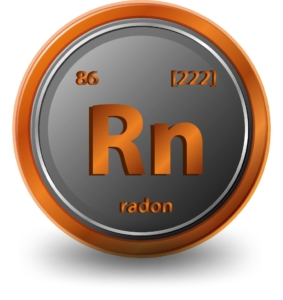Let’s Talk about Radon
 Radon gas is a naturally occurring radioactive gas that is formed by the decay of uranium and radium in rocks and soil. It is colorless, odorless, and tasteless, which makes it difficult to detect without specific testing. Radon can seep into buildings, including homes, and accumulate to levels that can be harmful to human health. The primary concern with radon exposure is its radioactivity, particularly the emission of alpha particles. Here are some of the physical effects of radon gas on human health:
Radon gas is a naturally occurring radioactive gas that is formed by the decay of uranium and radium in rocks and soil. It is colorless, odorless, and tasteless, which makes it difficult to detect without specific testing. Radon can seep into buildings, including homes, and accumulate to levels that can be harmful to human health. The primary concern with radon exposure is its radioactivity, particularly the emission of alpha particles. Here are some of the physical effects of radon gas on human health:
- Lung Cancer: The most significant health risk associated with radon exposure is an increased risk of developing lung cancer. When radon gas is inhaled, its radioactive decay products can attach to dust and other particles in the air. When these particles are breathed in, they can become lodged in the lungs and emit alpha particles, which can damage the cells’ DNA, potentially leading to lung cancer over time.
- Respiratory Issues: While lung cancer is the most severe outcome, exposure to high levels of radon gas may also cause respiratory problems such as persistent coughing, wheezing, and shortness of breath. Individuals with pre-existing respiratory conditions, such as asthma, may be particularly susceptible to these effects.
- Cardiovascular Effects: Some studies have suggested that long-term exposure to radon gas may have an association with certain cardiovascular diseases, although the evidence is not as strong as the link to lung cancer.
- Other Cancers: Although lung cancer is the primary concern, there have been studies exploring potential associations between radon exposure and other types of cancer, such as leukemia. However, the evidence for these links is not as clear-cut as for lung cancer.
It’s important to note that the risk of these physical effects is related to the level of radon exposure and the duration of exposure. Generally, the higher the radon concentration and the longer the exposure, the greater the health risk. Radon exposure is considered a significant health concern, and various health organizations, including the World Health Organization (WHO) and the United States Environmental Protection Agency (EPA), recommend taking measures to reduce indoor radon levels if they are found to be elevated.
If you are concerned about radon exposure in your home, it is recommended to conduct a radon test. Radon test kits are readily available and can help determine if mitigation measures are necessary to reduce radon levels to safer levels. If elevated radon levels are detected, professional radon mitigation services can be employed to address the issue and minimize health risks.
- Health Risk Assessment: The primary advantage of a radon test is that it allows for an assessment of potential health risks associated with radon exposure. Radon is a known carcinogen, and long-term exposure to elevated levels of radon gas can significantly increase the risk of developing lung cancer. By testing for radon, individuals can determine whether their home or workplace has elevated radon levels, enabling them to take appropriate actions to reduce the risk of health problems.
- Early Detection: Radon is odorless, colorless, and tasteless, making it impossible to detect its presence without testing. A radon test provides an early warning system to identify elevated radon levels before any health issues arise. Early detection allows for timely intervention and mitigation measures to be implemented to minimize exposure and reduce health risks.
- Peace of Mind: Knowing that radon levels in a living or working space are within safe limits provides peace of mind for occupants. It helps alleviate concerns about potential health hazards and ensures a healthier environment for everyone present.
- Real Estate Transactions: For those involved in buying or selling a property, a radon test can be essential. Many real estate transactions now include radon testing as part of the inspection process. Buyers can make informed decisions based on the test results, and sellers can address any radon issues before listing the property for sale, potentially increasing its market value.
- Long-Term Monitoring: Radon levels can vary over time due to factors such as weather conditions and building ventilation. Conducting periodic radon tests allows for long-term monitoring of radon levels to ensure they remain within safe limits.
- Effective Mitigation: If elevated radon levels are detected, a radon test provides valuable data for designing and implementing effective radon mitigation measures. These measures may include sealing cracks in the foundation, installing radon ventilation systems, or improving ventilation to reduce radon gas accumulation.
- Public Health Awareness: Widespread radon testing contributes to public health awareness of the risks associated with radon exposure. It encourages individuals and communities to take proactive steps to safeguard their health and promote healthier living environments.
In summary, a radon test offers essential information about indoor radon levels, allowing individuals to make informed decisions about their health and safety. It enables early detection, risk assessment, and effective mitigation, contributing to healthier living environments and potentially preventing lung cancer and other radon-related health issues. Call Clear Path Inspections today for a inspection. Ease your mind. 314-332-6008.

Leave a Reply
Want to join the discussion?Feel free to contribute!